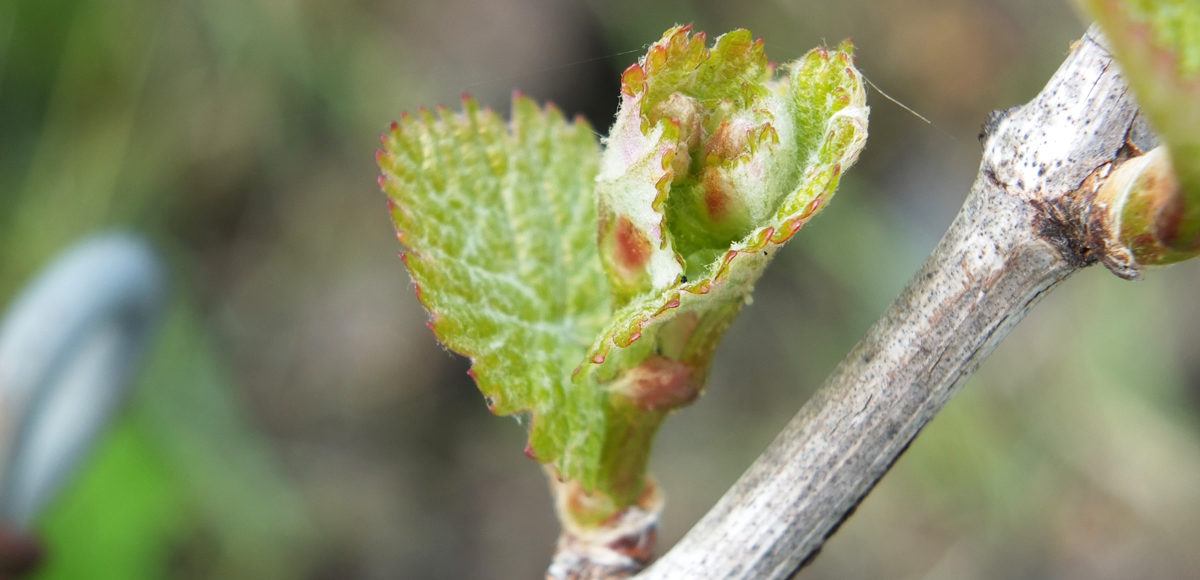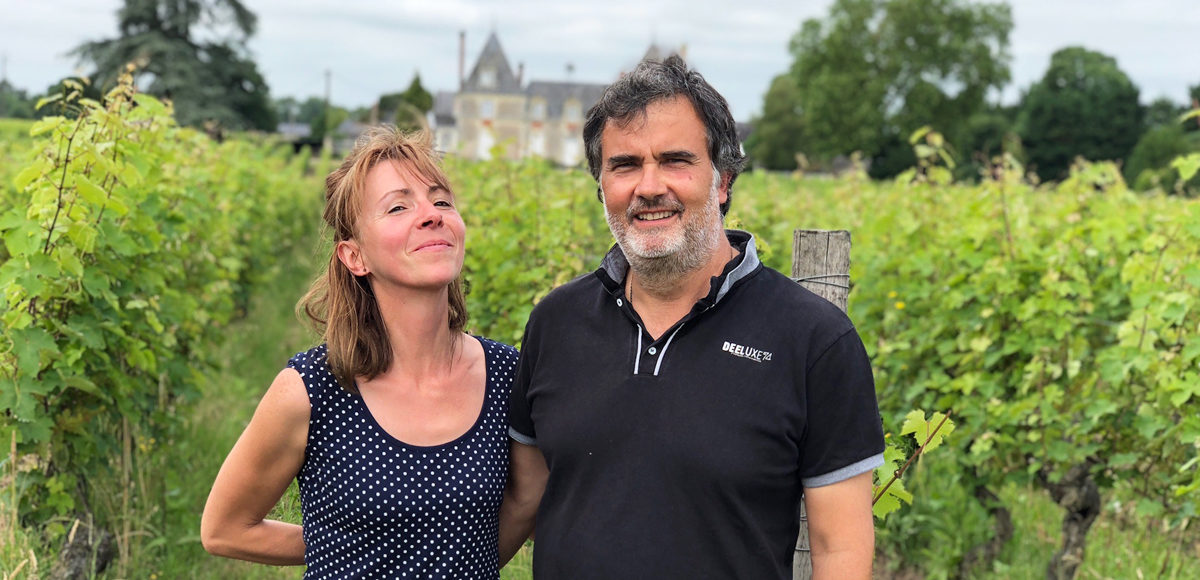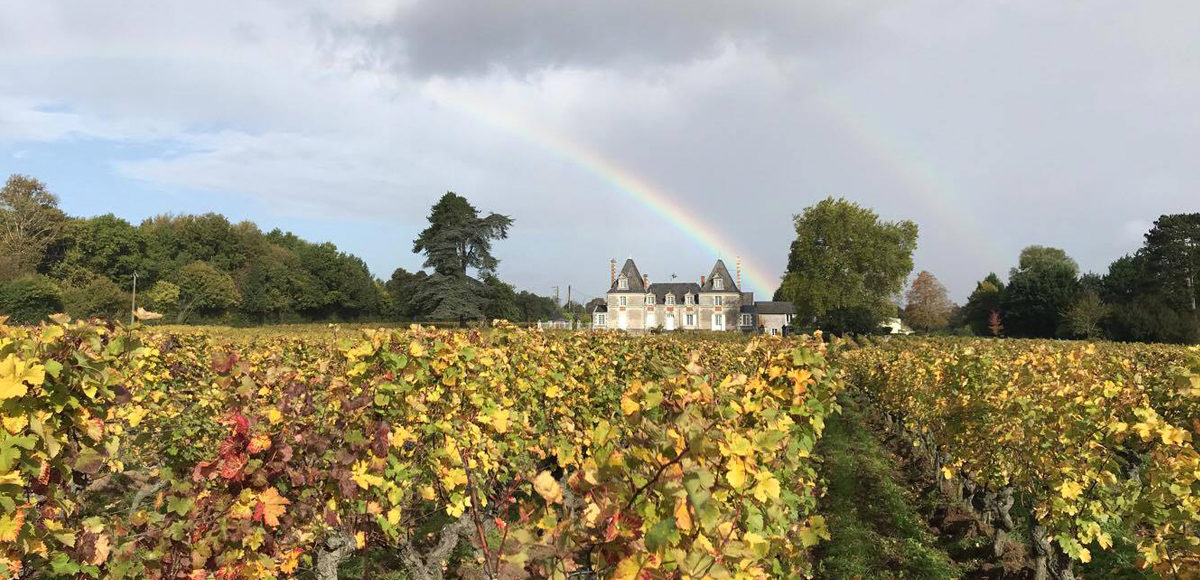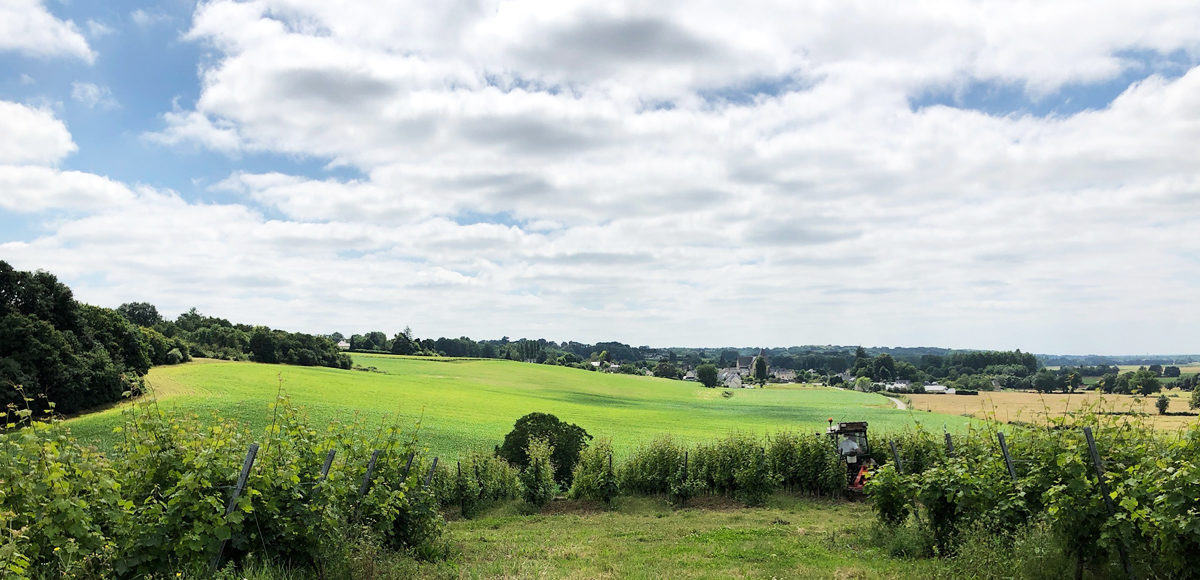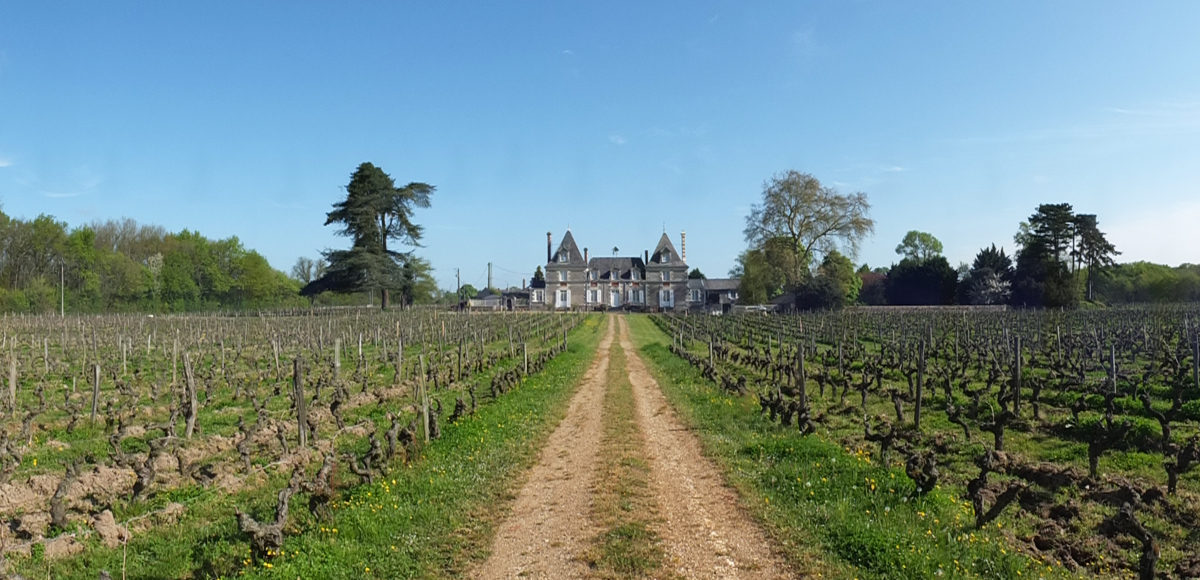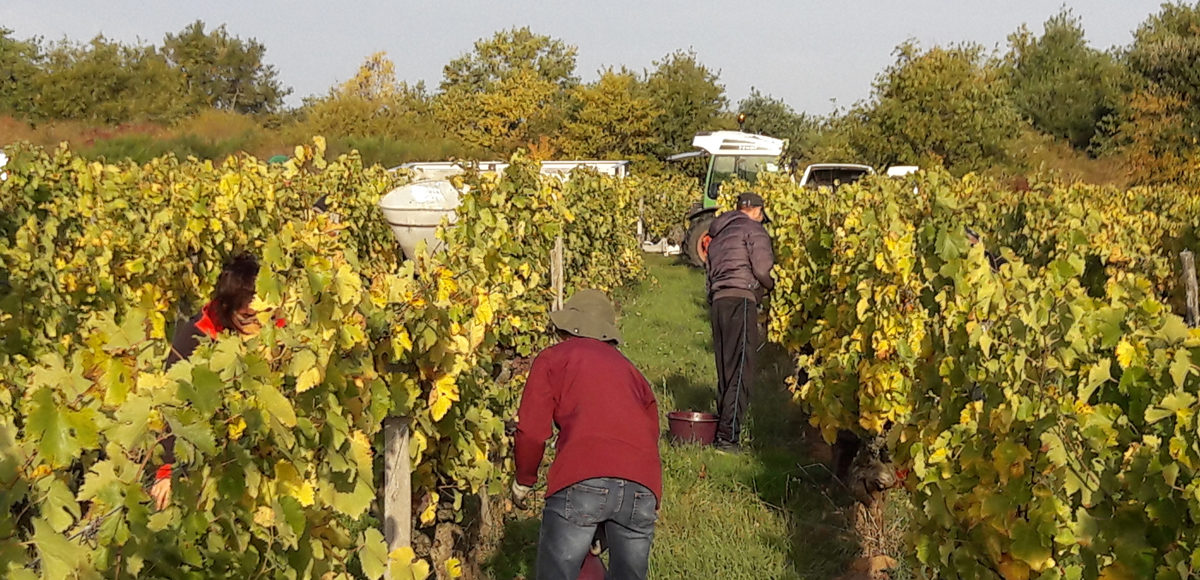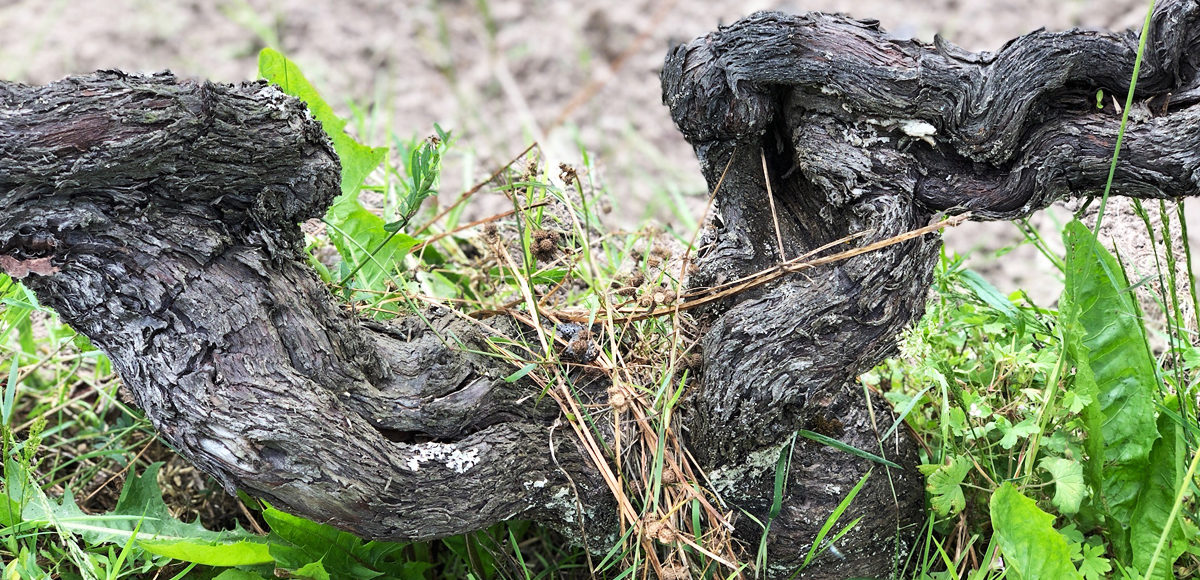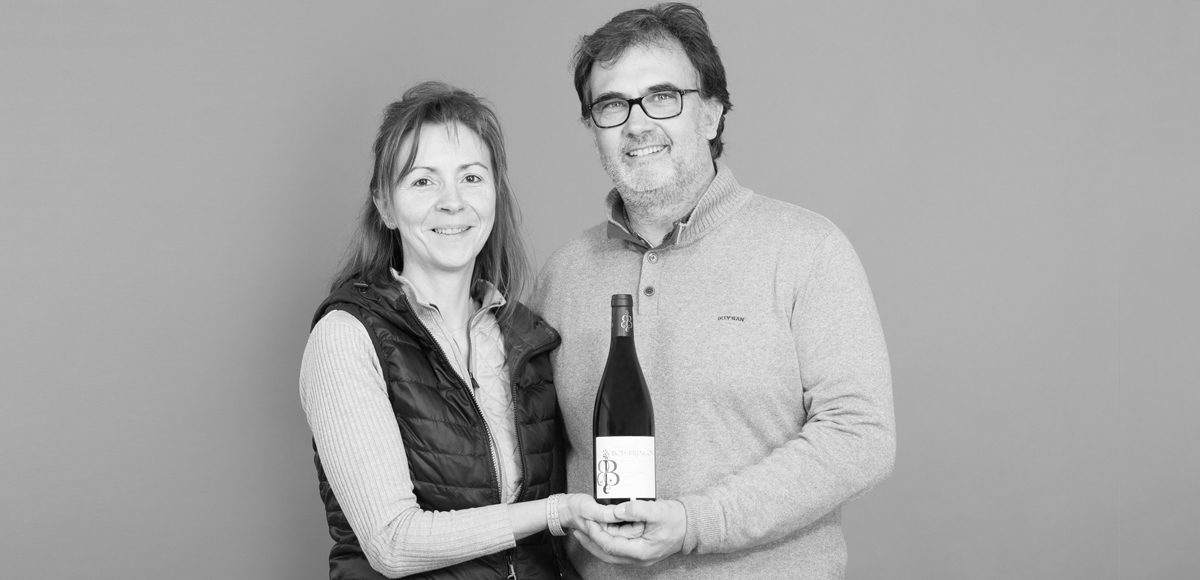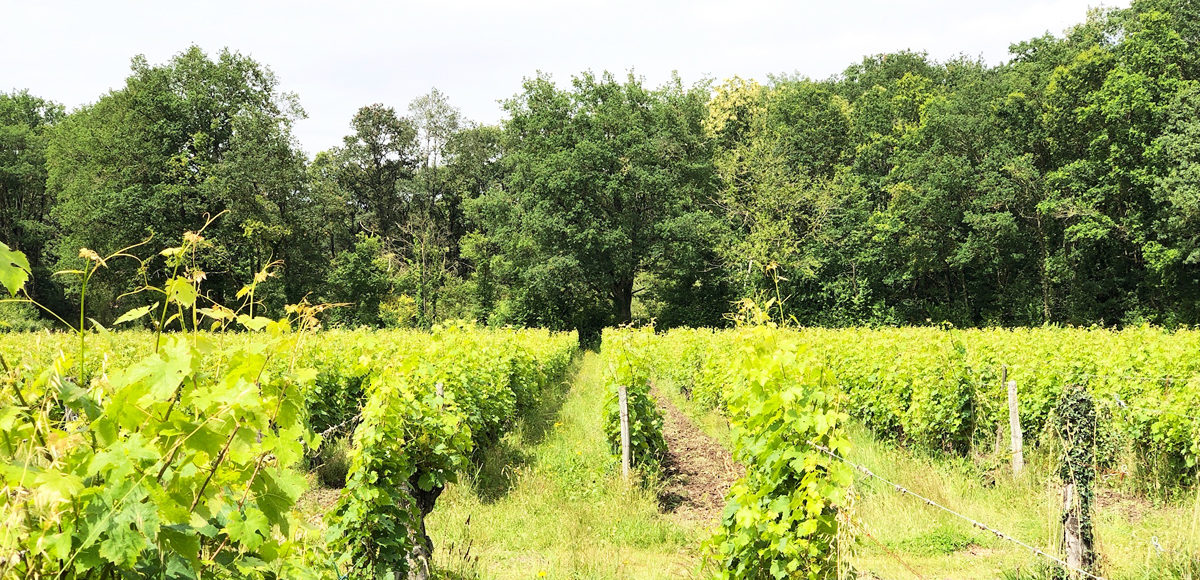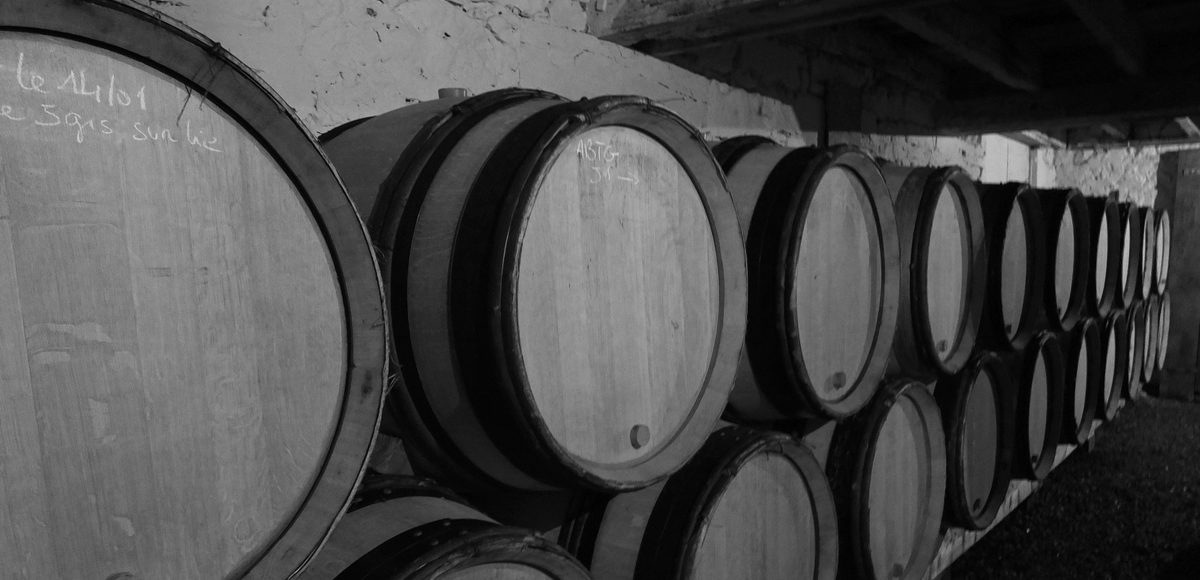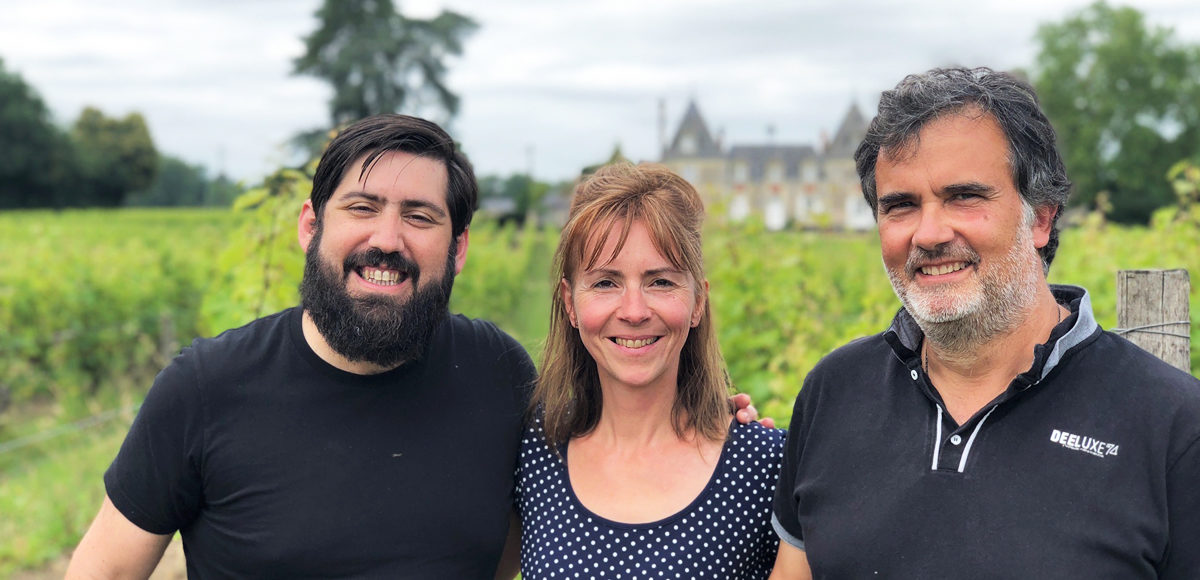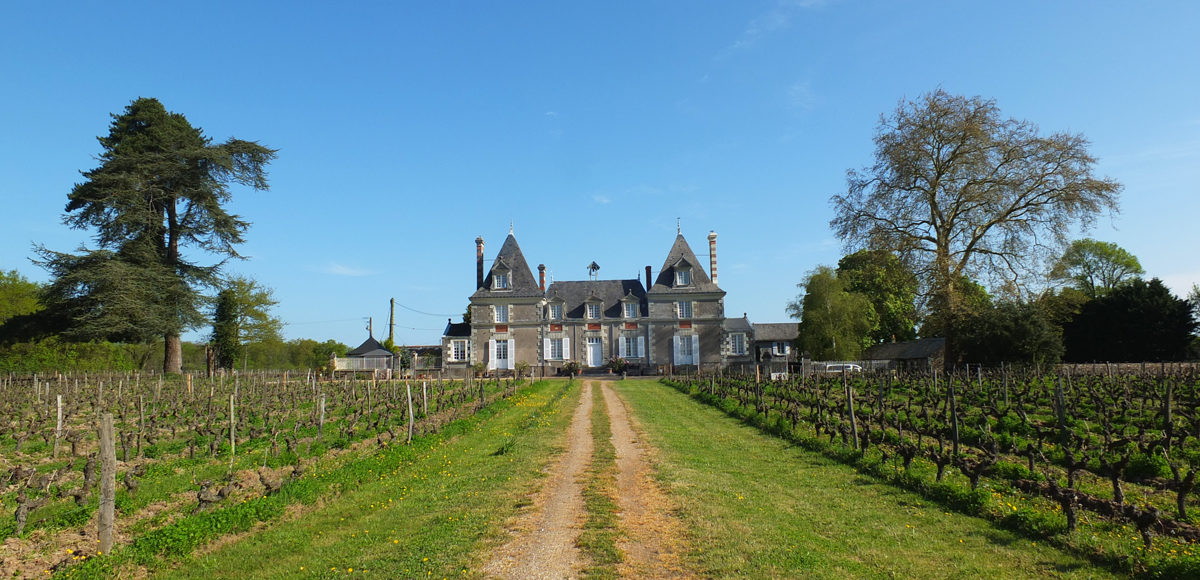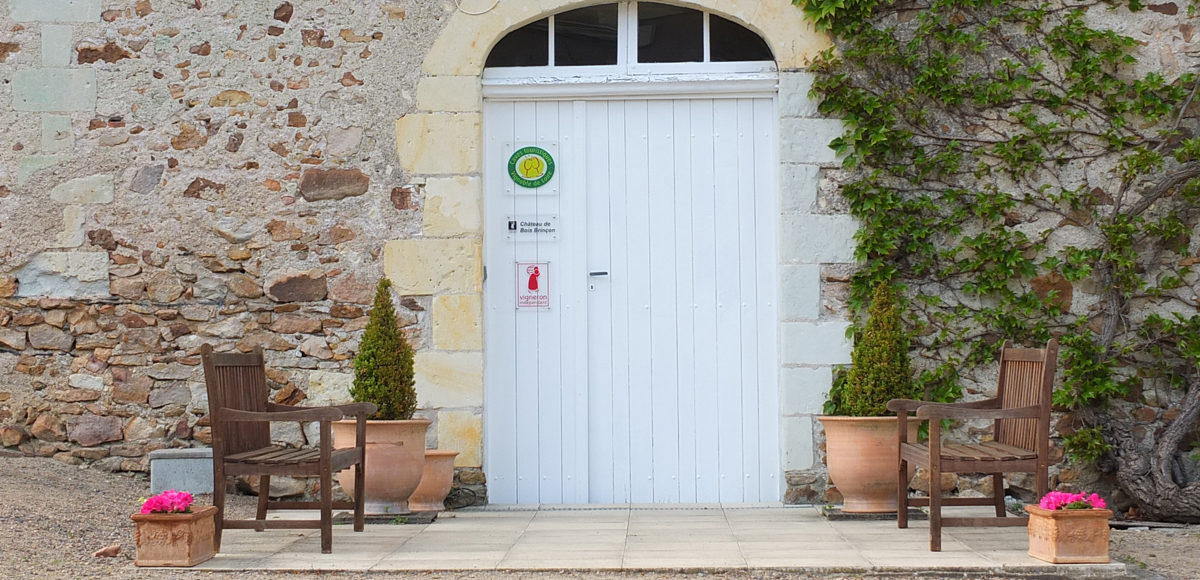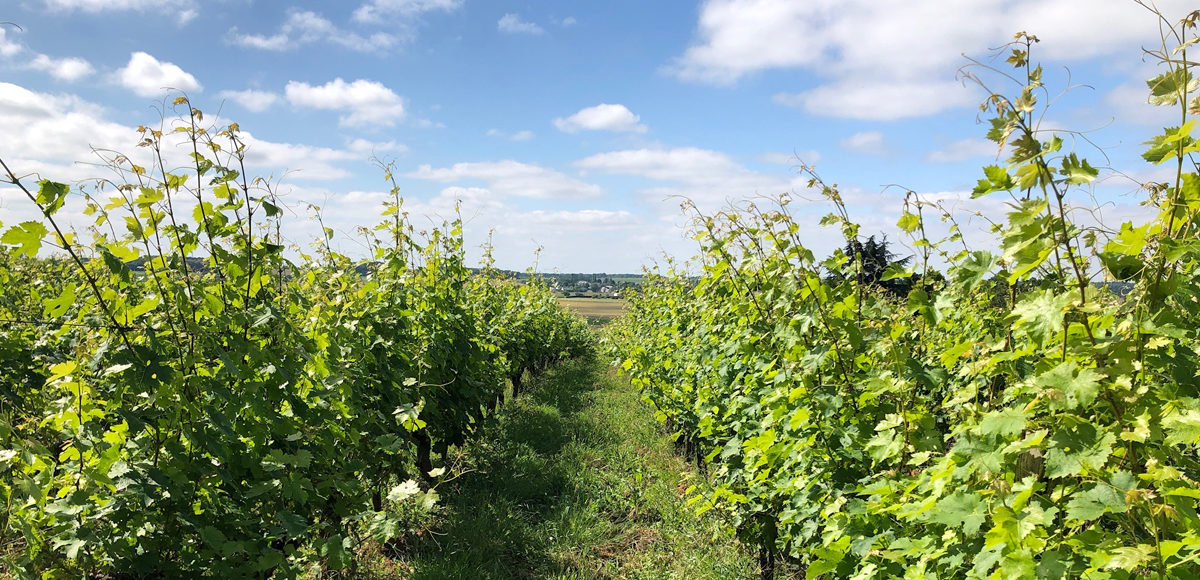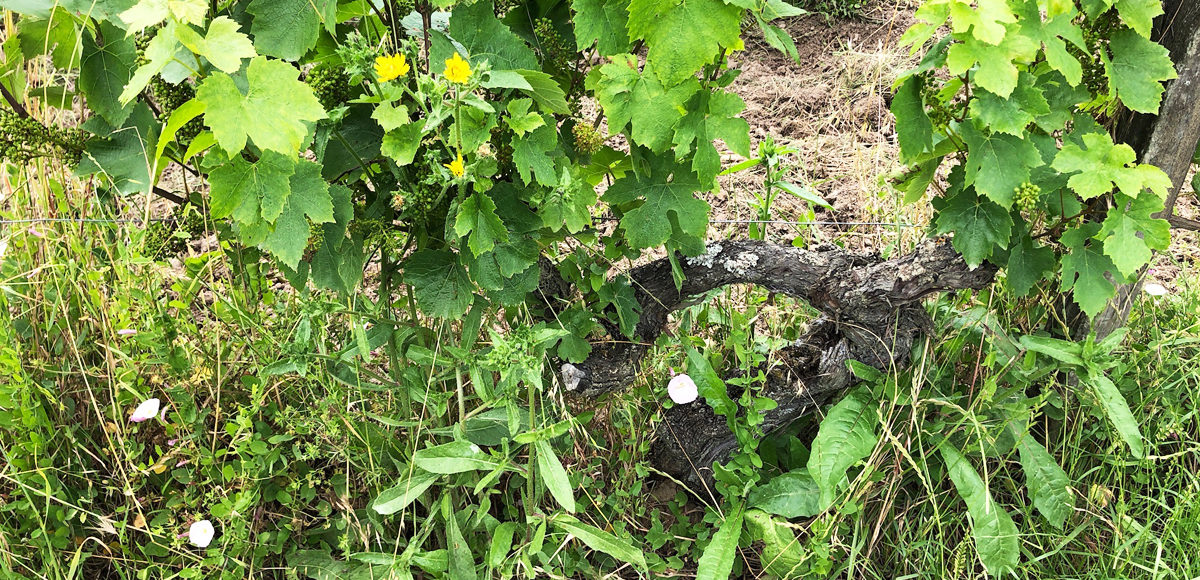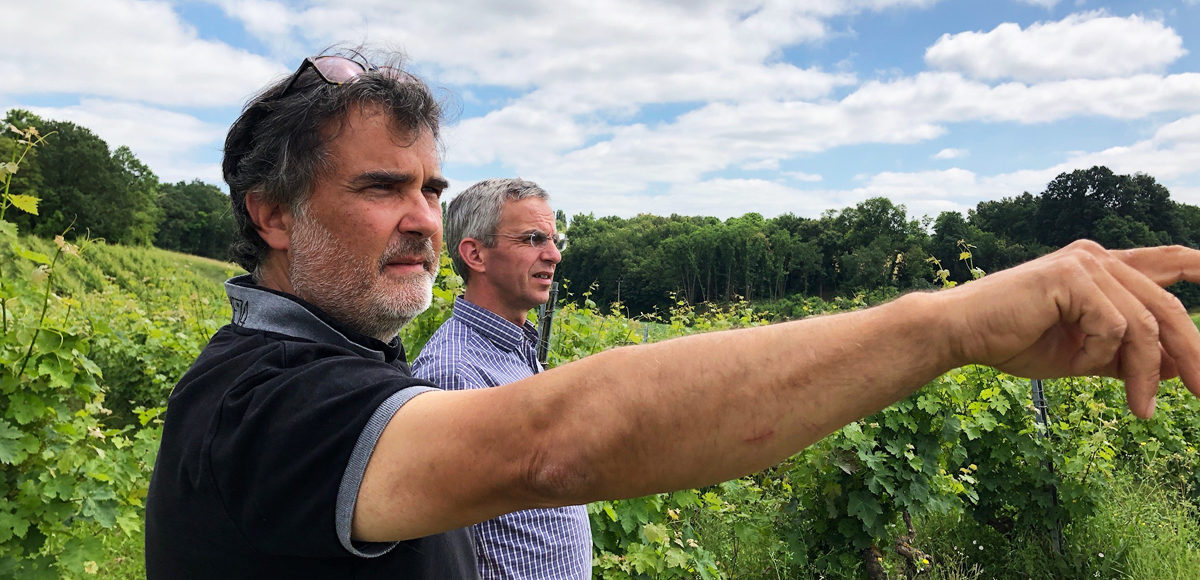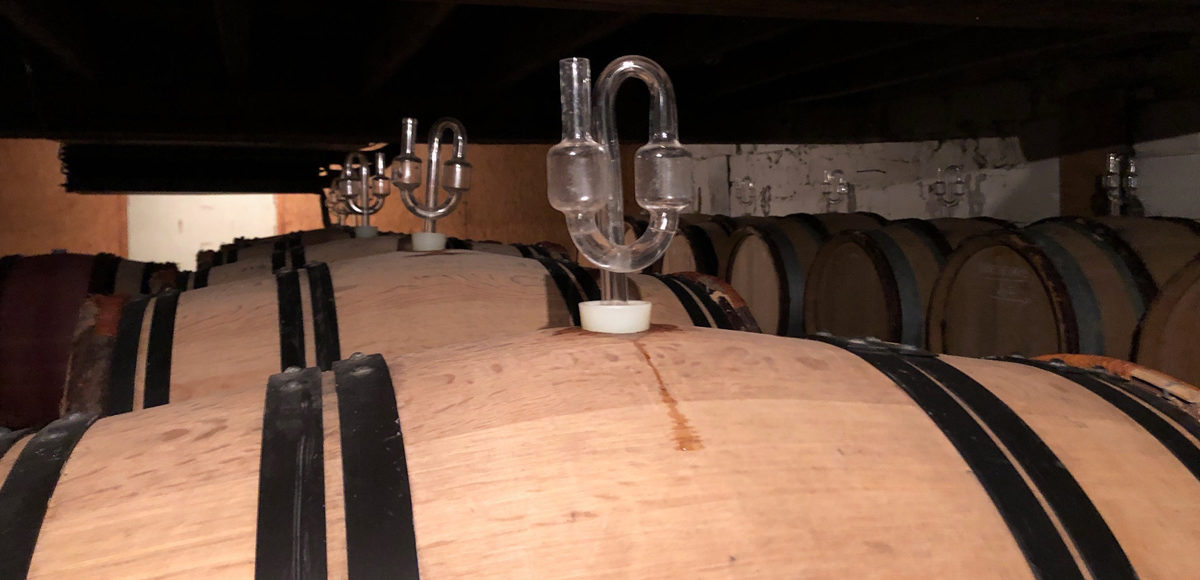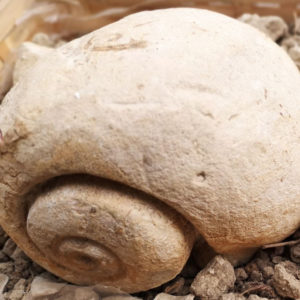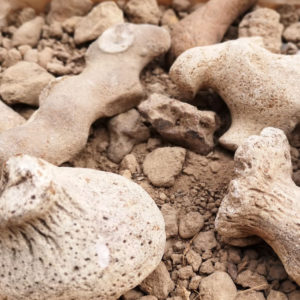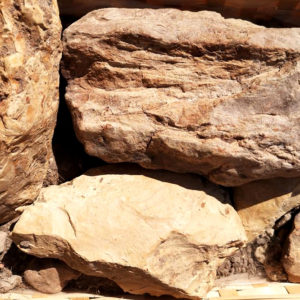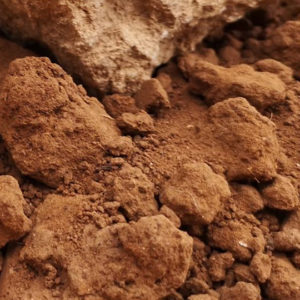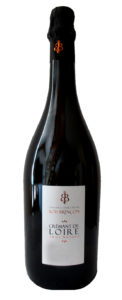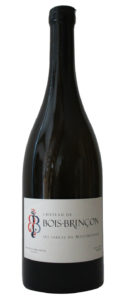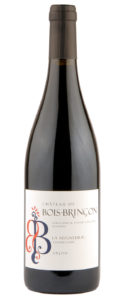“The right gesture at the right time in permanent awareness of respect for nature.” — Xavier Cailleau
Château de Bois-Brinçon
In the heart of Anjou stands Château de Bois-Brinçon, a domaine founded in 1219 by the Saint Jean d’Angers hospital. The domaine remained church property until 1791, when it was confiscated by the state and sold as a national asset. Xavier Cailleau is now the fifth generation of his family to own and work some of the oldest plantings of chenin, grolleau, and cab franc — 125 years and older — in the Loire. Xavier and his wife Géraldine, along with a small team, farm their 24 hectares biodynamically, out of profound conviction and in perpetuation of tradition, to offer “the true face of the soil.”
Reconnecting with tradition
Despite this venerable history, the domaine went through a difficult period in the ‘60s, ‘70s, and ’80s, when winemaking ceased and grapes were sold off. It was during this time that Xavier, then a boy, took a harvest visit to a vigneron uncle and began to wonder why wine was no longer made at Bois-Brinçon. He found harvest to be a time filled “with lots of happy and festive memories,” he recalls. More than this, “at the age of 12, I understood that we have a unique place with an exceptional history.”
Xavier Cailleau
Xavier went on to study first arboriculture, like his father Jean, then viticulture and oenology, at Libourne. His education included practical training in Saint Émilion with Pascal Delbeck at Château Belair and in Alsace with Jean-Michel Deiss at Marcel Deiss. Equipped with this knowledge and experience, Xavier set out to revive winemaking at Bois-Brinçon in 1991. “At the beginning, it was a real challenge to return to winemaking and the desire to make wines with a terroir identity,” Xavier acknowledges. A steady evolution, first to organics, then biodynamics, ensued. Xavier noted how quickly the vines responded to this approach, as the grapes began to offer “the true face of the soil.”
“Vinification by terroir”
“The Anjou region is a mosaic of very varied and rich terroirs,” Xavier explains. “Being at the junction of the Armorican Massif and the Paris Basin, the Bois-Brinçon vineyards offer a rare diversity of soils and landscapes spread over six communes and eight different terroirs.” The domaine’s key soils include several types that are quite specific to this part of the Loire: volcanic rhyolite and spilite; marne à ostracées, primarily composed of fossilized oyster shells interspersed with clay and limestone; and grès, consisting of fossilized coral and sponge-like rock atop pure Anjou tuffeau. Xavier is convinced that “vinification by terroir” is essential to the transcription of soil to wine.
Beyond the diversity of soils, Xavier believes a key advantage of Bois-Brinçon’s location is its climate, moderated by the Loire. What makes it unique is “the historical presence” of chenin, pineau d’aunis, grolleau, and cabernet franc. He is acutely aware of the value of his densely planted old-vine parcels, which average 50 years for his single-vineyard bottlings, with some vines as old as 125 years. Yields are also remarkably low. Bois-Brinçon’s 0.8 hectare of the famed Montbenault vineyard is harvested at just 20 hectoliters per hectare. Everything is in service to his ideal: “to transcribe the notion of landscapes that we discover plot by plot in the wines.”
Xavier and Géraldine’s philosophy of farming biodynamically “requires having the right gesture at the right time in permanent awareness of respect for nature.” They continually evaluate new and alternative practices to this end. Their commitment extends to a regional initiative to plant hedges and develop natural areas so birds and beneficial insects can restore the balance of nature in and around the vineyards.
In the cellar
“We accompany the wines without useless and traumatic interventions,” Xavier says, “like a parent who sees his children grow up and accompanies them so they take the right path.” In the cellar, his focus is on a long, slow, gentle “infusion” style, with an eye to elegance and freshness. The reds are all de-stemmed, do not undergo pigeage, are fermented in cement tank, and raised in neutral wood and stainless steel. The whites are strictly selected in the vineyard to remove botrytis (healthy, botrytized grapes are only chosen for the Coteaux du Layon), and whole clusters are given long, slow, gentle press cycles, with fermentation in neutral wood. Crémant is sourced from a tiny parcel of pure tuffeau topped with grès, tuned specifically for this wine. Primary fermentation occurs in temperature-controlled stainless steel tanks. The crémant is bottled with a percentage of natural grape sugar left in and secondary fermentation takes place in bottle, followed by two years of elevage sur latte.
